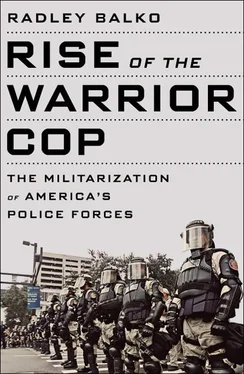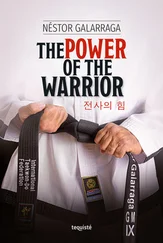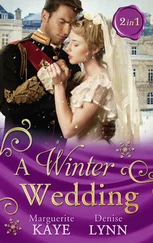Critics of the Warren Court blamed its decisions at least in part for the rise in crime that began in the mid-1960s. William F. Buckley called Miranda a “venture in abstractionist imperialism” and noted that “already the reports are coming in from the police commissioners who are, not so quietly, despairing.” 21Conservative columnist James Kilpatrick wrote that the Warren Court was “often pleased to turn the Constitution into wax.” 22And it wasn’t just conservative intellectuals. The Philadelphia Inquirer wrote after Miranda that “it would be a pity, at a time of increased lawlessness, if more attention is given to the rights of lawbreakers than the rights of the public to have effective police protection.” The Columbia, South Carolina, newspaper The State opined that the Court “wrapped its flowing robes around all prisoners so as to virtually immunize them” from police interrogations. The Richmond Times-Dispatch was blunter still, calling the Court “an ally of the criminal elements in America.” 23
Ironically, the Warren Court’s last controversial criminal justice decision actually expanded police authority. Terry v. Ohio was also arguably the decision that would have the most impact on the criminal justice system. In 1968 the Court ruled that police officers can stop, detain, and frisk someone based on no more than “reasonable suspicion” that the person is engaged in criminal activity or about to commit a crime. The vote was 8–1. In the coming years, more conservative Supreme Court lineups would expand the window that the Warren Court created in Terry . “Stop and frisk” would become a widely used, highly controversial, often abused police tactic. 24
The Warren Court’s more controversial decisions are still contentiously debated today. In his book Breaking Rank , former Seattle police chief Norm Stamper calls the rulings “the ones that most often piss off the cops.” 25Current Supreme Court justices Antonin Scalia and Clarence Thomas continue to express doubts about both Miranda and the Exclusionary Rule, which holds that evidence obtained through illegal searches and interrogations can’t be used against a defendant at trial. Current chief justice John Roberts argued against both for much of his career, and legal pundits have speculated that the Court may continue to water down or even overturn one or both during his tenure. 26
But ultimately, Eisenhower’s appointment may have served the law-and-order right better than he could have known before his death in 1969. Although the Warren Court’s legacy unquestionably granted new protections to criminal suspects, it also gave conservative politicians a villain to rail against—and run against. The Court’s controversial decisions spurred a generation-long anticrime backlash that countered its decisions with policies that gave police more power, more discretion, and more authority to use more force.
EARLY IN THE MORNING OF AUGUST 11, 1966, CHARLES Whitman—an Eagle Scout, an ex-Marine, and a former altar boy—went to his mother’s apartment and shot her in the back of the head. He then returned to his own apartment and stabbed his wife to death. He left a note in which he explained that because he loved the two women, he had no choice but to kill them. He wanted to spare them the embarrassment of what was to come. 27
Whitman had been experiencing changes in his behavior for months. He had seen a university psychiatrist, and during a single two-hour session confessed that he was having violent impulses with increasing frequency, and felt less and less able to suppress them. Dr. Maurice Dean Heatly described in his notes a man who was “oozing with hostility.” Whitman relayed a fantasy about “going up on the tower with a deer rifle and start shooting people.”
After killing his wife and mother, Whitman did exactly that. He packed a footlocker with sandwiches, gasoline, three rifles, a sawed-off shotgun, two handguns, water, and enough ammunition for a day at the shooting range. At around 11:00 AM, Whitman rolled the footlocker into an elevator in the clock tower building at the University of Texas at Austin. Posing as a maintenance man, he took the elevator to the twenty-seventh floor, just below the clock. There he met fifty-one-year-old receptionist Edna Townsley—and killed her by repeatedly striking her with the butt of a rifle. Whitman hid Townsley’s body as two visitors came down from the tower, then barricaded the exit. He killed two more tourists he found ascending the stairs.
Whitman returned to the top of the clock tower and, at about ten minutes before noon, opened fire on the people below. He shot indiscriminately, but with terrifying precision. A practiced and trained sniper, he fired just one bullet at each victim. As the victims fell, bystanders rushed out to help them. Whitman shot at them too. When ambulances began to arrive, Whitman shot at the drivers. As word got out that there was a shooter in the tower, some peered through windows at the scene unfolding, apparently feeling safe within the walls of a building. He shot them too. By the time Whitman was shot himself, he had killed thirteen people and wounded more than thirty, all from a position 230 feet from the ground. One victim, a basketball coach standing in the entrance to a barbershop, was five hundred yards away. Whitman’s killing spree lasted more than ninety minutes.
Austin police didn’t have guns that could reach the top of the tower. Some went home to get hunting rifles. Remarkably, a number of students and residents came out with rifles too. At least one witness said that the return fire limited Whitman’s options and may have prevented more casualties. For more than an hour and a half, Whitman indiscriminately picked off innocent people while the police were helpless to respond. His guns were bigger than theirs. And he’d positioned himself in a spot they couldn’t easily access.
Whitman was finally stopped when three police officers and a citizen named Allen Crum worked around his barricade and confronted him on the observation platform. Houston McCoy, a twenty-six-year-old Austin police officer, shot Whitman first, with a Winchester twelve-gauge shotgun. Officer Ramiro Martinez then emptied his revolver into the killer. Whitman was dead. 28In one of the notes he left behind, Whitman asked that his brain be studied to explain the onset of his violent urges. Doctors found an aggressive brain tumor growing in Whitman’s hypothalamus. The tumor was compressing an area of the brain in the hypothalamus known as the amygdala, which regulates primal emotions like fear and anger. 29
Between Whitman’s massacre and the epidemic of urban riots, police leaders across the country started to consider whether they were prepared to respond if such incidents happened in their own cities, towns, and counties. The Austin Police Department clearly wasn’t prepared, and the incident there created an appetite for precisely the sort of police unit that Daryl Gates was cooking up in Los Angeles. According to author and twenty-five-year police veteran Robert Snow, after Austin “the country’s police chiefs knew they couldn’t always depend on luck. They needed a unit that could be called in at a moment’s notice and plans that could be carried out immediately.” 30In the magazine The Tactical Edge —a publication marketed to SWAT teams—Lt. Sid Heal of the LA County Sheriff’s Department writes that the Whitman shootings “marked the birth date of the modern police SWAT concept. Since that day, almost every police department in the United States has formed a special response team to handle similar situations.” 31
Читать дальше













